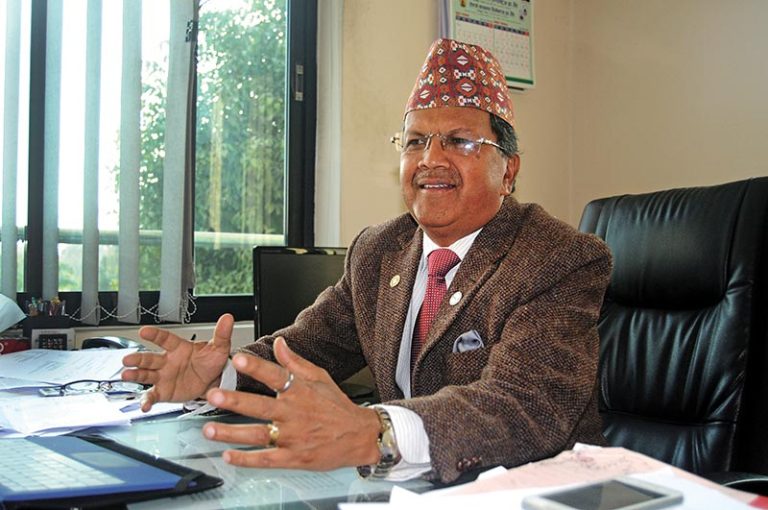
Message From the President
Cement Manufacturers Association (CMA), Nepal
It gives me immense pleasure that we have been able to bring out this document, “Guideline for the Design and Construction of Cement Concrete Pavement,” for low-volume traffic roads.
Developed countries have been using cement concrete pavement for roads for more than 100 years. Many developing countries have also started using this type of pavement in large volumes for constructing roads, including high-speed roads. We are yet to adopt this technology.
Though the initial investment cost in cement concrete pavement is higher compared to asphalt concrete pavement, this option has been found to be more economical when calculating the life cycle cost due to the higher operation and maintenance costs associated with asphalt concrete paved roads. Today, we have a sufficient quantity of cement produced in the country and an abundant volume of fine and coarse aggregate available in most parts of the country. It has been observed that it is high time for a country like Nepal to accelerate the replacement of asphalt concrete paved roads, which use expensive imported bituminous material, with cement concrete paved roads that utilize all domestic materials.
In this context, as an alternative to asphalt for road pavement, cement is more acceptable considering its multiple benefits. At the beginning, we can practice it for low-volume traffic roads. It is also seen that many local governments have started using cement concrete pavement in their local roads and in some critical high-gradient roads. However, there are a lot of confusions and variations in the design and construction of such roads due to the lack of a proper guideline.
To move forward, the Cement Manufacturer’s Association of Nepal (CMA Nepal) has initiated the preparation of this guideline for the design and construction of cement concrete pavement with the aim to support and ease the local governments and working professionals in proper designing and construction of pavement and adoption of standard construction methods.
We trust that this manual, developed for the first time, will be accepted and adopted by all local, provincial, and federal government organizations as a reference document.
CMA is thankful to the experts Dr. Padma Shahi and Er. Rajendra Sharma for their outstanding contribution in preparing the document. Similarly, we are grateful to IPTM Nepal for taking the sole responsibility of coordinating and publishing this document as a consultant.
We will be thankful to all concerned for providing positive and constructive comments and suggestions during the preparation of this guideline.
Last but not least, I am grateful to all members of CMA for the support extended to bring out this manual.
“Forging the foundations of tomorrow with the strength of today.”
– Dhruba Raj Thapa, President of CMA
in our city
region covers
garden land
Ownership
Teku, Kathmandu, Nepal
Mon – Fri: 10:00 am – 5:00 pm
(Closed on Public Holidays)
Useful Links
CMA News & Updates
The latest CMA news, articles, and resources, sent straight to your inbox every month.

